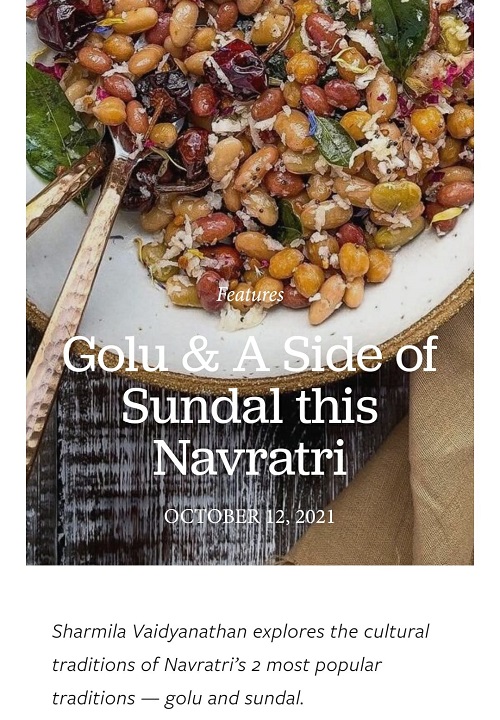Sharmila Vaidyanathan explores the cultural traditions of Navratri’s 2 most popular traditions — golu and sundal.
As published in the Goya Journal on October 12, 2021.
Tell me you’re celebrating Navaratri, without telling me you’re celebrating Navaratri.
I’d post a picture of sundal.
Festivals have interesting ways of announcing their arrival. There are the material elements, of course, but each festival carries with its own distinct, evocative trait. No matter how many lamps surround me, it never really feels like Deepavali until the aroma of ginger, pepper, carom seeds and jaggery cooking in ghee, wafts through the kitchen. The quintessential Deepavali legiyum — a digestive paste, eaten first thing in the morning, is what symbolizes the arrival of the festival of lights, to me. When the hum of sizzling oil dotted with seedais (crispy balls made of rice flour) fills my ears, I know for sure that we are celebrating Krishna Jayanti. And when pressure cookers get to work at 3 pm, their whistles coinciding with my evening cup of coffee, it is time for sundal and Navaratri.
A very elemental description of sundal would be to say that it is a south Indian dish made with legumes, spices, coconut, and curry leaves. A more functional description would be that the sundal is a low-fat, protein-heavy snack that can be put together in a jiffy (soaking time not included, of course). While both are accurate, I am not sure they do justice to sundal. After all, encapsulating the zeitgeist of a south Indian Navaratri, a symbol of austerity amidst the festive fervour, it is an effortless dish that demands little from its maker, and one that has stood the test of time.
Celebrated over a period of nine days in the Tamil month of Purattasi, usually between September and October, the festival of Navaratri remains one of my personal favourites. During Navaratri, both material and evocative elements come together seamlessly for nine days of festivities, and a significant part of this is the Navaratri golu (or kolu).
Read the complete story here. –> Golu & A Side of Sundal this Navratri
